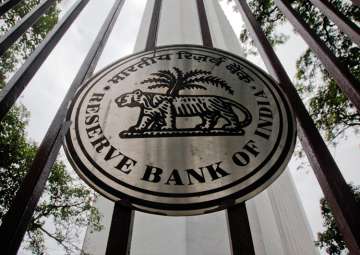The Reserve Bank has halved its dividend payout to the government to Rs 30,659 crore for the fiscal ended June 2017, which analysts attributed to increased printing cost of new currency notes post demonetisation, among other reasons.
Last fiscal, the RBI had transfered Rs 65,876 crore surplus as dividend to the government.
"The Reserve Bank's Central Board at its meeting held today approved the transfer of surplus to the Government of India amounting to Rs 306.59 billion (Rs 30,659 crore) for the year ended June 30, 2017," the central bank said in a statement.
The apex bank, however, did not cite any reasons for paying less dividend.
The government had expected Rs 58,000 crore in dividend from the RBI in 2017-18. As per the budget estimate, the government had pegged Rs 74,901.25 crore as dividend from the RBI, nationalised banks and financial institutions for the current fiscal.
The decline in dividend by RBI may put pressure on fiscal maths and the government has to find resources to meet its fiscal deficit target of 3.2 per cent for 2017-18.
Explaining the rationale, former RBI Deputy Governor R Gandhi said for the past few years, returns have been coming down because of negative interest rates in the developed countries.
Due to increased liquidity in the system, the RBI has been borrowing money under reverse repo and paying interest which has implications on the revenue, he added.
According to analysts, one of the reasons for the dip in the RBI's revenue was the cost of printing new currency and also return of junked notes post demonestisation.
The government on November 8 last year demonetised old Rs 500 and Rs 1,000 currency notes as part of efforts to fight corruption and the black money menace.
As on November 8, 2016, the total value of currency in circulation was Rs 17.7 lakh crore. The value of scrapped notes was Rs 15.44 lakh crore, about 86 per cent of all currency.
An average cost of printing one new note of Rs 500 denomination is in the range of Rs 2.87 to Rs 3.09, and Rs 3.54 to Rs 3.77 for Rs 2,000, Minister of State for Finance Arjun Ram Meghwal had said.
However, he did not give total cost the Reserve Bank incurred on printing of new currency notes.
According to India Ratings & Research Chief Economist D K Pant, the significant decline in dividend is due to reverse repo transactions, printing of notes and appreciation in rupee's value against the US dollar.
"First quarter direct tax collections if continued in the fiscal will provide some buffer for central government deficit," he said.
Direct tax collection has registered a steady growth of 19.1 per cent in the first four months of the current fiscal to Rs 1.90 lakh crore.
Latest Business News

